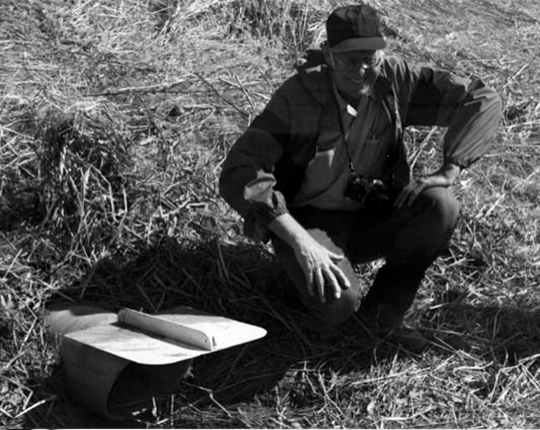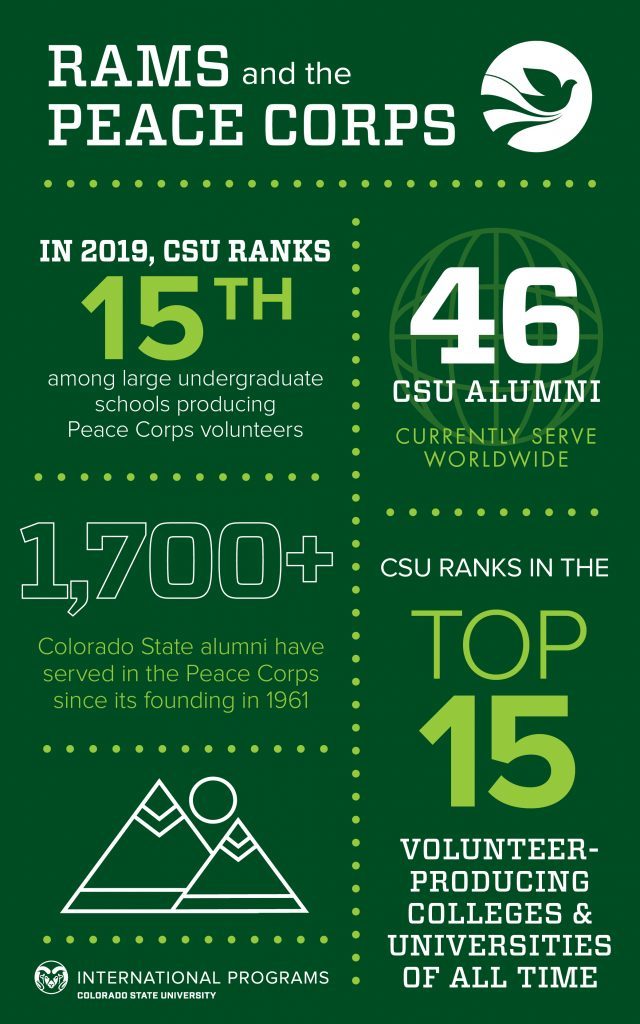The persistent optimism of Maury Albertson
by Jane Albritton published Oct. 24, 2019We need to be motivated by service as well as by profit. We serve best by finding out what people want and helping them work to realize their dreams.
– Maurice Albertson, CSU professor of civil engineering
The overarching quality of the life and career of Maurice Albertson was a kind of rare joy that saturated his work in water resources research, his international outreach that endures in both the Asian Institute of Technology in Thailand and the Peace Corps, and his capacity to bring others along for the ride. He had a style that said in his tall, smiling way: “I have this great idea, and I am certain that you will soon understand just how great it is. As if you thought of it yourself.”
Albertson arrived at Colorado State, then Colorado A&M, in 1947 with a Ph.D. in mechanics and hydraulics from the University of Iowa and a D.Phys.Sc. from the University of Grenoble in France. Using a campus lab inherited from the Bureau of Land Reclamation, Albertson, along with his colleagues and students, modeled studies in hydrology. By the mid-1950s, the university had the largest water resources research and graduate program in the world, and Albertson had acquired a reputation for bringing in significant grant money to support it.
In 1958, President William Morgan made Albertson director of the CSU Research Foundation, or CSURF, noting that since he was bringing in 80% of CSU’s grant money, he might as well have a proper title.
International outreach

With Maury Albertson, one thing always led to another. What began with his academic studies in mechanics and hydraulics just naturally seemed to flow into international research and development. Albertson’s work with the Southeast Asia Treaty Organization and the U.S. Agency for International Development to establish the Asian Institute of Technology in Thailand had, by 1959, stretched the land-grant mission beyond geopolitical boundaries and, fortuitously, into a different sort of international program that will forever bear CSU’s stamp.
Albertson’s interest in international development along with his frequent trips to Washington, D.C., in the late 1950s put him in an information grapevine that had started buzzing about a “4-Point Youth Corps.” The idea was to send young Americans to work in developing countries.
As Albertson said in a 2008 interview with the Northern Colorado Business Report: “I knew that CSURF was the only organization in the country that could put together the report on ‘the advisability and practicability of the 4-Point Youth Corps.’ I recruited Pauline Birky-Kreutzer to put together a proposal to get the contract from the State Department. It was only for $10,000.”
The competition for this small grant was fierce. The Stanford Research Institute and MIT wanted it. But Albertson never let the people in Washington forget CSU. On his bimonthly visits to Washington for other grant and research meetings, he would drop in on Rep. Henry Reuss from Wisconsin or members of the International Cooperation Agency to keep them up to date on the ideas he and his team of two had about the project. Resistance was futile.
Moving at warp speed


Albertson teaching students on irrigation project in 1957, and in 1982. Photos: Colorado State University Archives
The State Department finally understood that Albertson and Birky-Kreutzer were the two they had been looking for all along. Putting the touch on the Rockefeller Foundation and the Rosenthal Foundation when the promised $10,000 was slow to arrive, Albertson set in fast motion the feasibility study for establishing the 4-Point Youth Corps, to be forever known as the Peace Corps.
How fast? It was 1960 when the work on the study began. The Peace Corps had 400 volunteers in the field by the fall of 1961.
Albertson and Birky-Kreutzer’s contract with the State Department called for a detailed study in at least 10 countries on three continents, with a preliminary report due in February 1961. Ever optimistic, Albertson combined a trip to the SEATO Graduate School of Engineering with stops in Pakistan and India. Asia – check. He dispatched Birkey-Kreutzer to South America and the Caribbean. Check. With an offer of airfare, he recruited a member of CSUs philosophy faculty, Manuel Davenport, who had been invited by Albert Schweitzer to attend a workshop in Africa, to do the study on that continent. Check. And done.
Then, report in hand, came the hammering out of details as Albertson and Sargent Shriver, the Peace Corps’ first director, worked to articulate the mission of the organization to both Congress and to the public at large. What they agreed on was that volunteers would serve two-year tours of duty, enough time to get acquainted with the land, people and customs while sharing their skills in education, health, agriculture, urban planning, skilled trades, forestry, sanitation or technology. This centerpiece still stands as the defining shape of an organization that has to date sent more than 235,000 volunteers to serve in 141 countries.
In D.C., Shriver, Bill Moyers, and Warren Wiggins were moving just as fast to line up funding for the Peace Corps. Wiggins, who became the first director of Peace Corps operations, declared that the initial feasibility study “was right on target, a credible report which was widely circulated.”
The book that emerged from the initial report, New Frontiers for American Youth: Perspective on the Peace Corps, by Albertson, Birky-Kreutzer, and Andrew Rice, their D.C. contact, makes clear its place and purpose.
NEW FRONTIERS FOR AMERICAN YOUTH: PERSPECTIVE ON THE PEACE CORPS
Maurice Albertson, Pauline Birky-Kreutzer and Andrew Rice
The rapid development of the Peace Corps from a little-known idea scarcely a year ago to a vigorous operational program today is the most dramatic testimonial to the unusual appeal of the underlying concept. The favorable reaction of Congress and the enthusiastic backing of the President, in fact, accurately reflect an unusually high measure of public support. As early as January the Gallup Poll reported that 71% of the American people favored the idea and that only 18% opposed it.
But the very speed by which the idea has been translated into reality has raised with special urgency persistent questions relating to objectives and methods. It was to answer precisely these questions that the intensive and extensive investigations were undertaken by the Colorado State University Research Foundation and that this study was prepared.
Beyond answering “urgent questions,” New Frontiers provided a description of a Peace Corps flexible enough to morph and grow to meet the “felt needs” of populations that Shriver, Albertson, and Birkey-Kreutzer could have hardly have imagined in 1961. South Africa? The Kyrgyz Republic? Mongolia? No problem.
Beyond the Peace Corps
After helping set the course for the Peace Corps, Maury Albertson continued to build on his energetic land-grant vision as an innovative teacher and scholar for another 50 years. He was named a Centennial Professor by the College of Engineering in 1970 during Colorado State’s Centennial year; he received emeritus status in 1998. And in 2006, the university awarded him an honorary doctoral degree for his humanitarian work. Three years later he was in Nepal, working with engineering students and faculty at Tribhuvan University in Kathmandu to develop and install small hydrogen fuel generators throughout the nation’s countryside to meet energy needs.
Energy. His seemed boundless. Albertson let his work flow like water over or around obstacles that might have stymied another sort of scholar/teacher/engineer for good. Set in motion, it still flows from those who were touched by it.
Dr. Maurice Lee Albertson died at 90 on Jan. 11, 2009. Shabash, well done, Maury.
